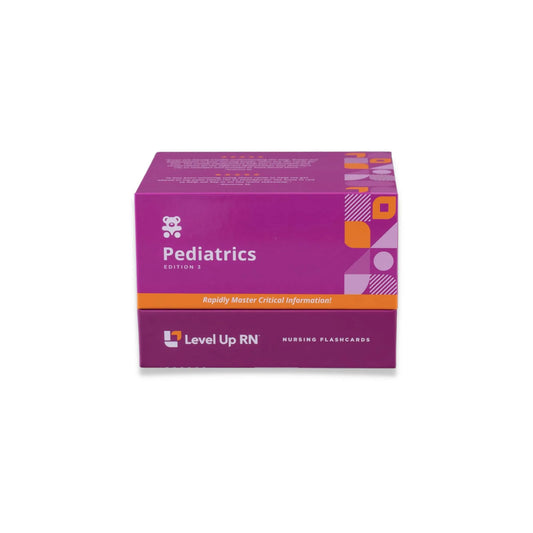Hi, I'm Cathy with Level Up RN. In this video, I am going to begin my coverage of reproductive system disorders from our pediatric nursing flashcards. Specifically, I'll be talking about gynecomastia and ambiguous genitalia. And then at the end of the video, I'm going to give you guys a little quiz to test your understanding of some of the key points I'll be covering. So definitely stay tuned for that. So if you have our flashcards, go ahead and pull them out so you can follow along with me.
Gynecomastia is enlargement of the male breasts, and it is very common during puberty. And for most boys, it will self-resolve in one to three years. However, gynecomastia can be the result of a hormonal imbalance as well as the use of recreational drugs, such as anabolic steroids. And then certain medications can cause gynecomastia as well. Examples include spironolactone as well as ketoconazole. In terms of diagnosis, if no other symptoms are present and the provider feels that gynecomastia is just a normal part of the child's development, then testing and treatment is not necessary. And the family should be reassured that gynecomastia almost always goes away on its own. However, if an underlying disorder is suspected, then diagnostic tests such as an ultrasound or blood work to measure hormone levels may be ordered. In terms of treatment, as I mentioned before, treatment is not necessary in most cases. If a drug or medication is causing the gynecomastia, then discontinuing that drug will often resolve the condition. And then for persistent gynecomastia that is causing significant psychosocial distress, surgery is an option.
Let's now talk about ambiguous genitalia, which is also referred to as disorder of sexual development, or DSD. So as a reminder, the term hermaphrodite is antiquated, offensive, and should not be used. So ambiguous genitalia is where the newborn's genitalia deviates from how male and female sex organs typically appear. This is due to a hormonal imbalance or a genetic defect that affects the development of sex organs in the fetus during pregnancy. In terms of signs and symptoms, in genetic females, signs and symptoms may include an enlarged clitoris as well as labia that resembles a scrotum. And then in genetic males, signs and symptoms include a very small penis, cryptorchidism, which is where one or both testicles fail to descend, as well as hypospadias, which is where the urethral opening is located on the underside of the penis as opposed to the tip of the penis. Ambiguous genitalia is usually diagnosed at birth. Tests that may be ordered include blood tests to analyze chromosomes and to measure hormone levels. In addition, imaging such as an ultrasound or MRI may be used to view internal structures. So in most cases, treatment is not required unless the infant's ability to void is impaired. However, reconstructive surgery is available to preserve sexual functioning and fertility. And then hormone replacement therapy is also available to help treat any hormone imbalances.
All right. It's quiz time. Are you guys ready? I've got three questions for you.
Question number 1, most cases of gynecomastia in adolescents require treatment, true or false?
The answer is false. Most cases of gynecomastia resolve on their own in one to three years.
Question number 2, use of anabolic steroids can cause gynecomastia, true or false?
The answer is true.
Question number 3, in an infant with ambiguous genitalia, cryptorchidism and hypospadias may be present, true or false?
The answer is true.
All right. That is it for this video. I hope you found it to be helpful. Take care and good luck with studying.
[BLOOPERS]
It can be caused by a hormonal [inaudible].


